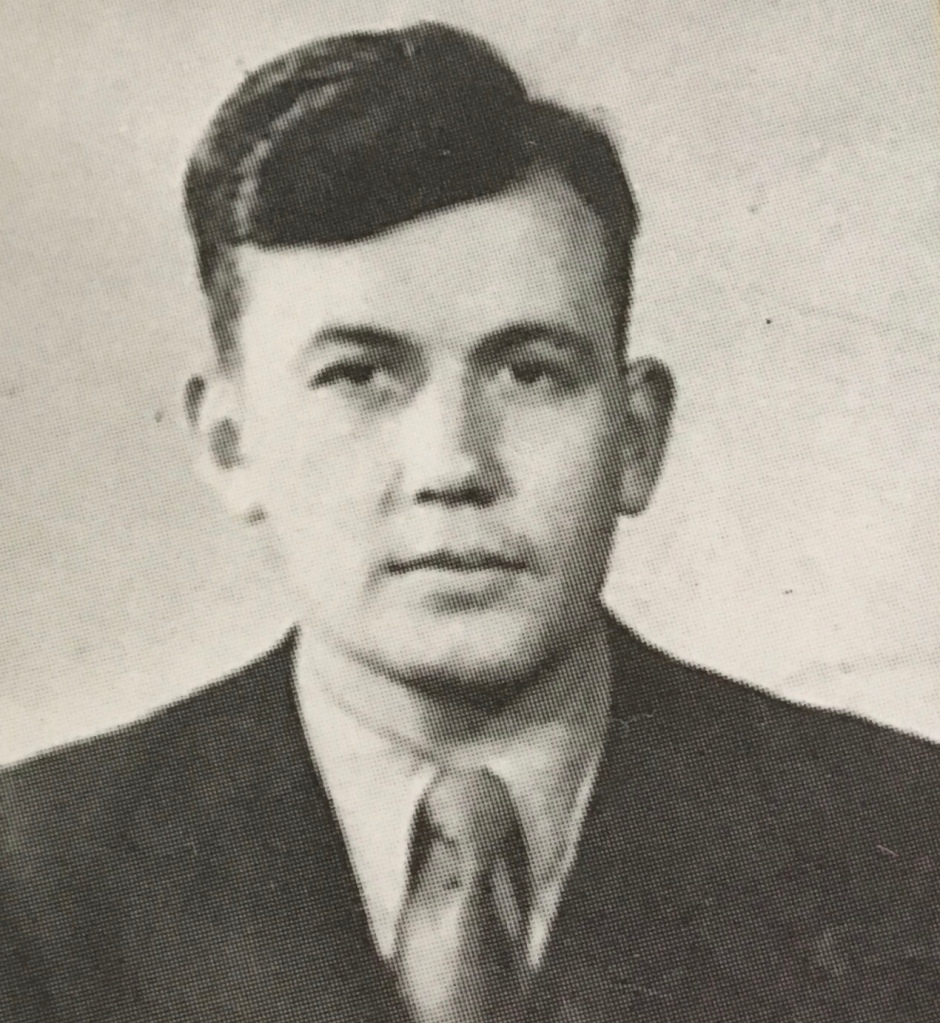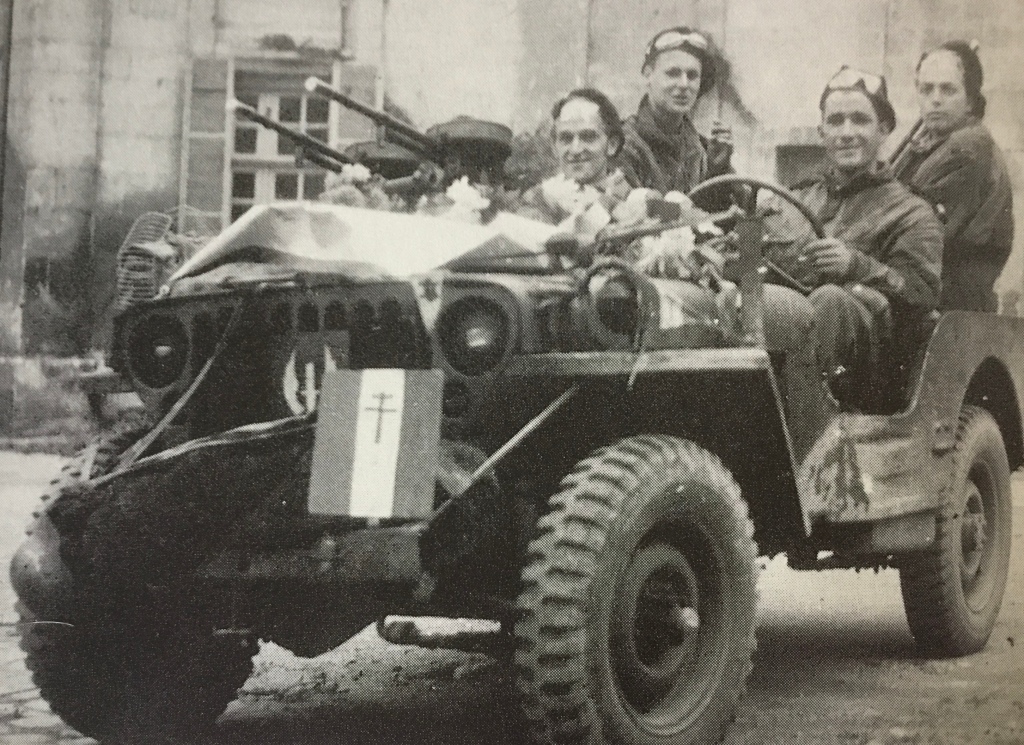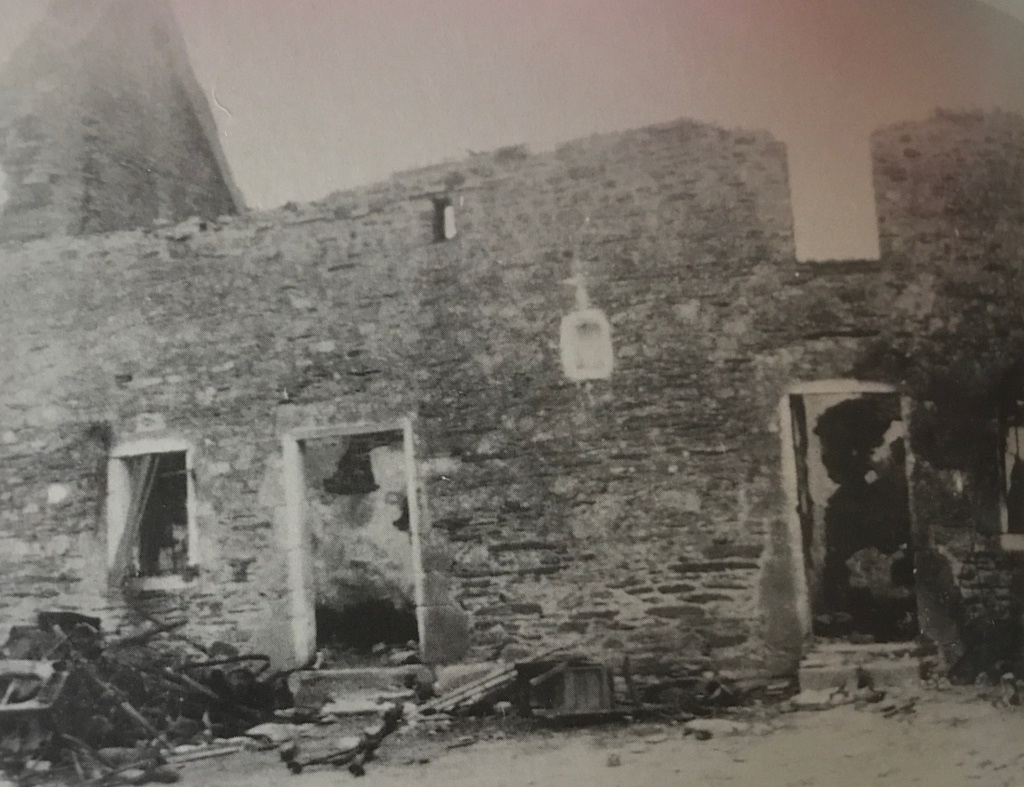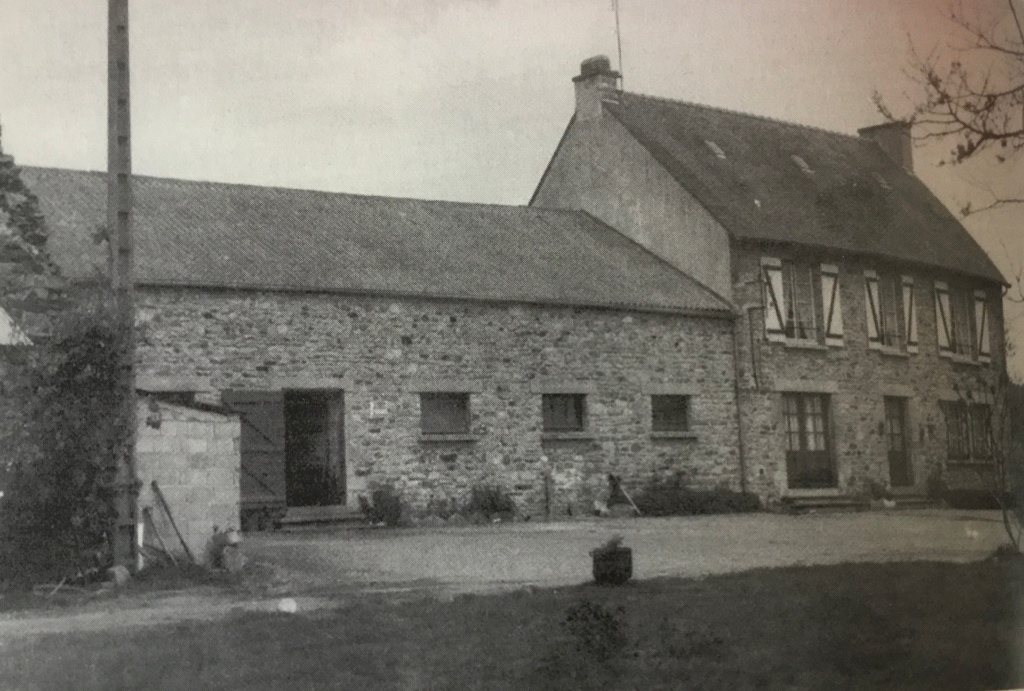One of the inspirations for Guy Samson in my Eve’s War Heroines of SOE series, André Hunter Alfred Hue was born in Swansea, Wales on 7 December 1923.

André’s father, also André, was French while his mother, Caroline, was Welsh. A First World War veteran, André senior received a bullet wound to the head. The bullet remained in place and contributed to his early death in 1938.
Caroline did not speak French. Indeed, before their marriage neither she nor her husband spoke each other’s native language. However, Caroline insisted that her children should learn French.
From Swansea, André’s family moved to Le Havre. There, in 1939, he became a sailor in the French merchant navy with the rank of purser.
On 17 June 1940, André’s ship, the SS Champlain, struck a mine off La Rochelle and sank. André was in the shower at the time, but he managed to swim ashore, naked.
While working as a railroad clerk in Guer, Brittany, André fulfilled a burning ambition and joined the French Resistance. The railroad station at Guer was strategically important because it served as a key artery for supplying German troops to north-western France.
Working in the railroad office, André provided information about secret timetables so that the RAF could attack trains carrying German troops and supplies.
As trust in André’s abilities increased, the Resistance encouraged him to smuggle Allied airmen, shot down over France, to safety, often by guiding them to the coast and the waiting boats and submarines.
With André’s courage and his trustworthiness established, the Special Operations Executive invited him to train as an agent. In February 1944 he crossed the Channel to Britain to commence training. His reports stated that he was “a very active, energetic, enthusiastic man with a reasonably stable personality, although inclined to excitement at times.”
André succeeded with his training and the SOE awarded him the rank of Acting Captain in time for Operation Overlord.
During the night of 5/6 June 1944, André parachuted into France. Men from the French Special Air Service accompanied him. Upon landing, an immediate task was to avoid Cossacks who were patrolling the countryside. The Cossacks were Soviet POWs who’d joined the German Army.

In Brittany, André’s task was to organise the local Maquis so that they could launch guerrilla attacks on communication lines, railroads and roads. Their ultimate aim was to prevent the four Nazi divisions stationed in Brittany from joining the rest of the German army in Normandy.
André was based at La Nouette farmhouse near Saint Marcel. He noted in his autobiography, The Next Moon, that he feared the Milice more than the Germans because the Milice being French could identify regional accents. However, as a natural French speaker he escaped initial suspicion.
On one occasion, André was present when the Nazis shot five SAS men and seventeen French civilians. On another occasion, he was trapped in a barn, which the Nazis had torched. Despite the smoke and flames, he managed to escape.
On 18 June 1944, the Nazis attacked André’s farmhouse. Four thousand Maquisards rushed to defend the farmhouse and the Battle of Saint Marcel ensued.

In The Next Moon, André recalled the battle. “Now every weapon that the enemy possessed was brought to bear on our front line in a cacophony of shots and explosions which could not drown an even more sinister noise: the occasional crack of a single bullet. A man within feet of me slumped to the ground with blood spurting two feet into the air from the side of his neck. We had anticipated an infantry assault – possibly backed up with light armour – but snipers, a threat we had not met before, were difficult to counter. Within minutes of the first casualty, another seven of our men lay dying within the farm complex: all had been shot from long range.”
As the Nazi snipers continued to assassinate André’s men, he could hear the sound of panzers in the distance, so he ordered a retreat into the woods under the cover of darkness. There, André used his radio to contact the SOE and RAF. They organised an air strike, which resulted in mass confusion. During that confusion, André and his men escaped.

Throughout August 1944, André participated extensively in the liberation of France. He executed an operation where the Resistance secured the villages in Brittany to aid the advancing Allies. After his work in Brittany, he parachuted into the town of Nevers in Burgundy, where he coordinated operations between the SOE and the Resistance.
On 30 August 1944, André landed in the Nievre just west of Dijon where he took command of the SOE Gondolier circuit. There, he trained the local Maquis and blew up three bridges in Burgundy, which denied the retreating Nazis an exit point from the South of France. Also, in Luzy, André removed mines, placed by the Nazis to kill and maim local civilians.
For his extraordinary efforts, André was awarded the Distinguished Service Order (DSO) for his work in France. At the age of twenty, he was one of the youngest men to receive a DSO.
By the end of the Second World War, André held the rank of Major in the British Army. He served overseas, in Burma, Palestine, Cyprus and Cambodia. During his stint in Cambodia, he met his future wife, Maureen Taylor, who worked in the British Embassy in Phnom Penh. The couple married in 1957 and had one daughter.
Before establishing a successful business career, André worked for MI6, his activities centred on the Far East.
In later years, André suffered from Alzheimer’s disease, which claimed his life in 2005.
